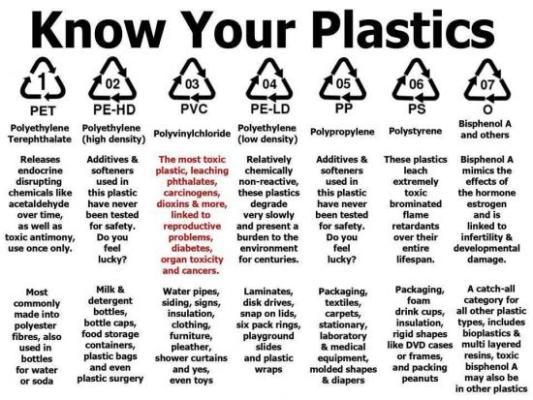How To Recognize the Plastics That Are Hazardous To Your Health
The chemicals contained in plastics can be quite harmful. But given that "plastic" can mean a wide variety of substances, it's difficult to know which ones are bad for us. Here’s everything you need to know about plastic and an its impact on your health.
Manufacturers often add different chemicals to plastics to give them the exact characteristics they’re looking for, like flexibility, strength, and reduced production cost. These components can include phthalates, bisphenol A (BPA), polybrominated diphenyl ethers (PBDE) and tetrabromobisphenol A (TBBPA) — all of which alter hormone expression in nonhuman animals and humans.
These chemicals are known as endocrine-disrupting compounds (EDCs), and each affects different elements of hormone disruption (e.g. inducing estrogen-like activity, thyroid hormone homeostasis disruption, anti-androgens, and so on). Also, some chemicals are made of monomers, which have known mutation-inducing and cancer-causing qualities. And yet other compounds contain toxic metals.
These chemicals can enter the human body in any number of ways and at dramatically different levels. Many of them seep into the environment during the production process or as waste. They enter our waterways and other areas where they eventually make contact with humans.
Frustratingly, these sorts of interactions are (largely) beyond our control, so for the purposes of this discussion we’re going to focus solely on the plastics that are used to store and deliver food, drink, medicines, and anything else that can be directly and consciously ingested (including plastic toys, because babies and infants like to suck on them).
Thankfully, there is a classification system, called the Resin Identification Code, that describes the type of plastic resin used to make a container or bottle. Most containers and packages should have a number printed on it, a series ranging from one to seven.
In our analysis, we’ve included links to published studies showing the potential risks associated with each plastic type. Where possible, we’ve made note of which studies involve nonhuman animal test subjects, and when toxicity levels fall below dangerous levels. You should interpret and use this information in a way that satisfies you.
Alright, here’s what you need to know about the different types of plastics:





















